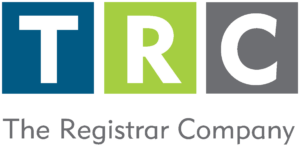No matter how many audits someone has gone through, knowing that someone will be auditing your work always generates some tension and anxiety. Here are some recommendations from The Registrar Company, a North American Certification Body with over 20 years of auditing experience, to help your organization prepare for a successful ISO 9001:2015 audit.
Prepare Employees
- Quality Policy – Review the quality policy, refresh it if needed, and make sure everyone understands it. There is no need for workers to memorize the policy, but they should have a clear understanding of what the organization has committed to in terms of quality.
- Quality Objectives – Workers should know what the organization’s quality objectives are and how they themselves contribute to achieving them. Employees should know and be able to explain how their day to day activities can influence these objectives.
- Training – Ensure that everyone has been properly trained to perform their tasks.
- Documented Information – Make sure everyone knows where to find current copies of procedures, work instructions, and forms that are relevant to their position.
- Audit Schedule – Let everyone know the scope of the audit, when they will be audited, and what the auditor may be checking in their areas.
- Interviews – Workers should have the confidence to answer what they know, and have the same confidence to say ‘’I don’t know” when they are not sure how to respond during an audit.
Review Documented Information
- Make sure document and record listings are up-to-date.
- Check that all documents have been reviewed, approved, communicated, and followed by everyone involved in the process or activity.
- Ensure obsolete documents have been removed from circulation and are no longer in use.
- Verify that all records are being used correctly.
Ensure all Processes are Being Performed Correctly
- Make sure that all procedures (whether they are documented or not) are being followed.
- Ensure that critical processes are being performed in the same way (the correct way) by everyone.
Review Corrective Action Process
- Review the findings from previous audits and make sure they have been addressed.
- All non-conformities must be properly recorded, investigated, and actions need to be in place or concluded by the time of the audit.
- Corrective actions that have been executed and closed should also have been verified for effectiveness.
Organize the Workplace
- It is difficult for quality control and assurance to take place in an untidy, dirty, or unorganized workplace. Take time to organize the workplace (offices, desks, warehouse, workshop floor, etc.).
- Make sure records, forms, procedures, and any relevant documents are on-hand or easy to access.
Practice Positivity and Professionalism
- Make a good first impression – treat auditors professionally and with respect.
- Do not be predisposed. Auditors are not enemies, they are there to establish conformance and to help your organization uncover any weaknesses so that you can take the necessary actions to improve.
 TRC is internationally recognized and trusted. With a large network of auditors, TRC is an international certification body with local benefits. With dedicated Client Services Managers and family-owned and entrepreneurial values, our clients are family. We take the time to understand your business and your unique needs. TRC audits are more than a checklist, we highlight your corporate strengths, and find opportunities for improved processes to ensure you stay competitive and thriving. TRC works with you to ensure minimal disruptions so you receive the highest benefits from the auditing process.
TRC is internationally recognized and trusted. With a large network of auditors, TRC is an international certification body with local benefits. With dedicated Client Services Managers and family-owned and entrepreneurial values, our clients are family. We take the time to understand your business and your unique needs. TRC audits are more than a checklist, we highlight your corporate strengths, and find opportunities for improved processes to ensure you stay competitive and thriving. TRC works with you to ensure minimal disruptions so you receive the highest benefits from the auditing process.
ISO Terms Explained

To the novice quality manager, ISO jargon can be extremely overwhelming. What is an NCR? What do you mean by OFI? Are we certified or accredited? But before you go and pull out your hair, let’s take a moment to go over some of the most frequently used terms and their definitions with regards to ISO and Management System Certification.





thank you for the information – well written.
I would appreciate it if you could put the clauses number that are related to the points that you have mentioned. This will help me understand the ISO 2009:2015 more.